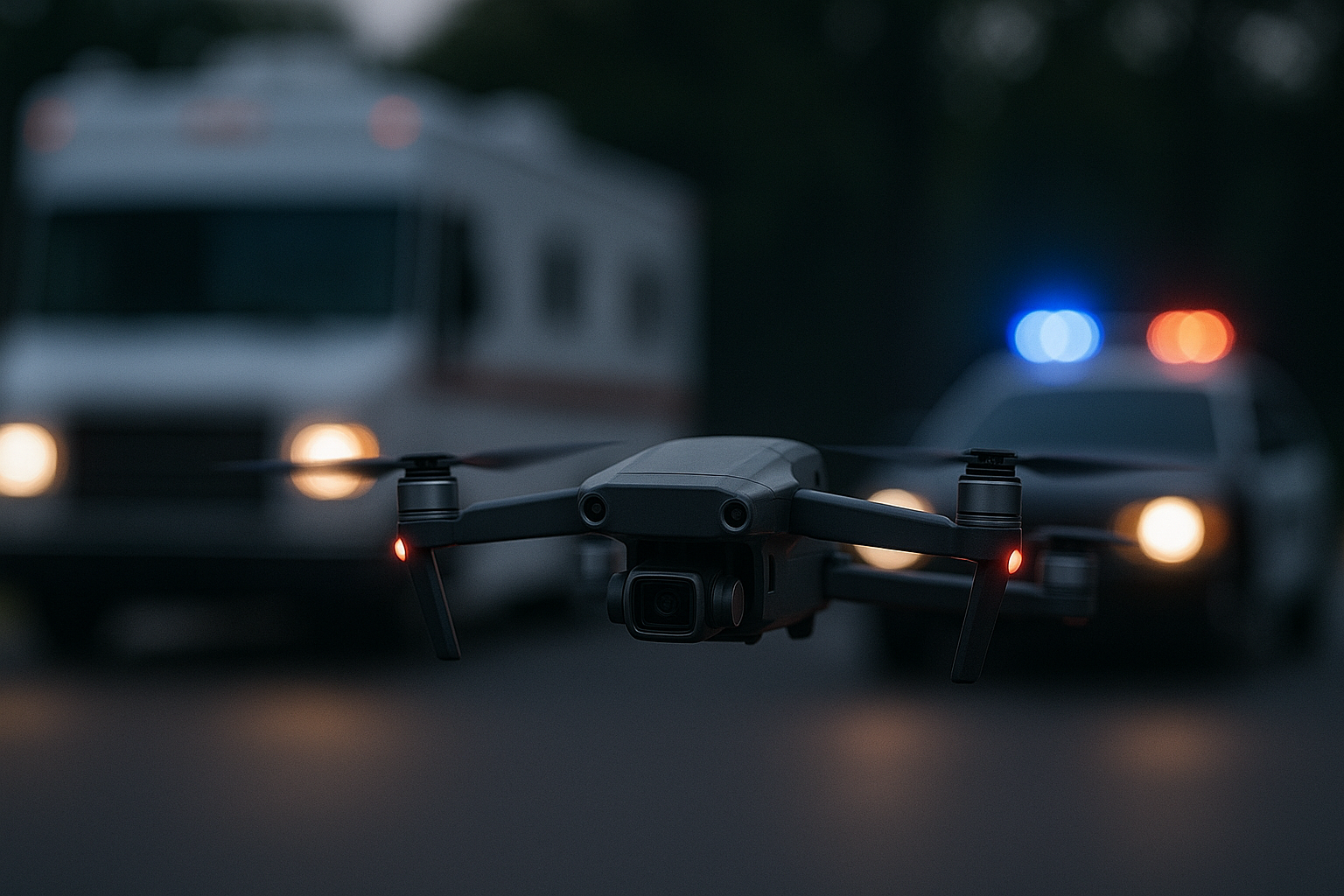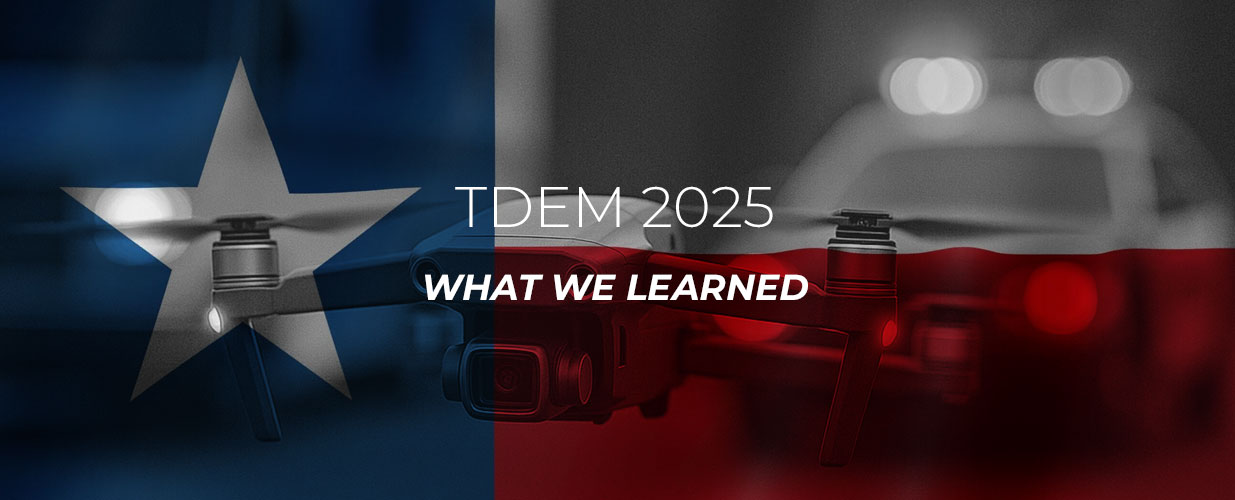Despite drawing 4,200+ attendees from 45 states and six countries, the TDEM Conference remains deeply grounded in Texas, making it a unique window into real-world emergency management and offering a valuable opportunity to hear from the people tasked with planning for, responding to, and recovering from disasters in Texas.
As returning attendees, the Nomad GCS team was there to listen, learn, and engage. One area that caught our attention was the increasing interest in drones and unmanned aircraft systems (UAS). While drone-focused vendors made up a relatively small slice of the total exhibitor pool, their presence was notable, and a few well-attended breakout sessions highlighted how emergency managers are beginning to think beyond traditional drone applications.
We attended these sessions and had conversations on the show floor to better understand how UAS technologies are being evaluated and adopted at the state and local levels.
Drones: More Than First Responder Tools
Drones have long been associated with tactical law enforcement or fire department use. But at TDEM, the conversation went well beyond those traditional boundaries. Emergency managers and public safety professionals are looking at drones through a broader lens and seeing them as scalable, flexible tools for preparedness, response, and recovery.
Use cases are multiplying, and drones have a broad spectrum of emergency management applications: mapping a flood zone, conducting post-disaster damage assessments, providing overwatch during large-scale public events, or supporting search and rescue operations in remote terrain are but a few examples. And often, drones can do it faster, cheaper, and safer than ground-based alternatives.
One recurring message: Drones aren’t replacing people. They’re enhancing what people can do.

Emerging Use Cases Driving UAS Momentum
These applications for UAS stood out during the conference:
- Mapping and Modeling
High-resolution aerial maps created in real time can improve situational awareness before, during, and after incidents. Multi-spectrum imagery can catch details that are transparent to the human eye. Aerial imagery even supports pre-incident planning and grant applications. Here is a great overview: https://aeroviews.co/blog/aerial-mapping/
- Disaster Assessment
Following severe weather or structural damage incidents, drones can quickly provide visual documentation to help determine the extent of impact, prioritize resources, and begin the recovery process. Esri was present at TDEM, and they provide a valuable case study in drone imagery and disaster assessment: https://www.esri.com/en-us/lg/product/geoacuity-case-study
- Special Event Support
For events with large crowds or sprawling venues, drones give command staff an elevated view of movement patterns, traffic congestion, and emerging risks. They’re force multipliers that enhance safety and coordination. This use case is receiving increased attention, garnering its own breakout session at TDEM. A good introduction to the concept can be found here: https://www.agsprotect.com/blog/drones-event-security
Getting from Pilot to Program: What Agencies Must Consider
With so many compelling uses, it’s easy to get excited about deploying drones. But there are important considerations that came up in sessions and side conversations.
Use Case Alignment: Not every drone fits every mission. Payload capacity, flight time, ruggedness, and weather tolerance all matter. Agencies need to think carefully about what they’re trying to achieve—and how their drones will be stored, transported, and deployed. This 911.gov article provides some additional insight: https://www.911.gov/assets/The-Uses-Continue-to-Emerge–Public-Safety-Drones-and-Considerations.pdf
Operational Support: Who is flying the drone? What kind of training do they need? Is the agency managing operations internally or through mutual aid partners? These are critical questions for long-term program success.
Regulatory Compliance: FAA Part 107 certification is just the start. Agencies may need additional waivers for night operations, flight over people, or beyond visual line of sight (BVLOS). Staying on the right side of regulations is essential but is sometimes overlooked. The Federal Aviation Administration (FAA) even has a “Getting Started” guide geared towards public safety programs: https://www.faa.gov/uas/public_safety_gov/drone_program
Security and Procurement: The source of drone hardware and software was a hot topic. Concerns about foreign-manufactured components and data security have led many agencies to consider NDAA-compliant systems or prioritize American-made solutions.

What We’re Thinking About Now
As a company that designs and builds Connected Mobile Operations Centers (CMOCs), we naturally think about how new technologies integrate into field operations. For drones, that means enabling secure storage, efficient charging, video/data streaming and cloud applications, offloaded data storage, and flight control, all from a mobile base of operations. While this blog post isn’t about our products, it’s clear to us that the drone conversation is increasingly tied to the bigger picture of mobile response capability.
More importantly, we left TDEM with a better understanding of how drones are reshaping emergency management. Agencies are moving quickly to adopt UAS technologies, and they’re asking the right questions. They want tools that are mission-ready, interoperable, secure, and adaptable to real-world operations.
Looking Ahead
The 2025 TDEM Conference reinforced that drones are no longer an emerging capability; indeed, they’re well-established. But the story is far from over. As technology continues to evolve and agencies gain operational experience, drone capabilities will expand and diversify. Whether used for disaster assessment, public safety, or mission coordination, UAS tools will increasingly be part of the emergency management toolkit.
We appreciated the opportunity to learn from practitioners, hear about real-world use cases, and understand the challenges and opportunities ahead. The conversations we had at TDEM help shape our thinking—and we hope these takeaways benefit your decision-making as well.

